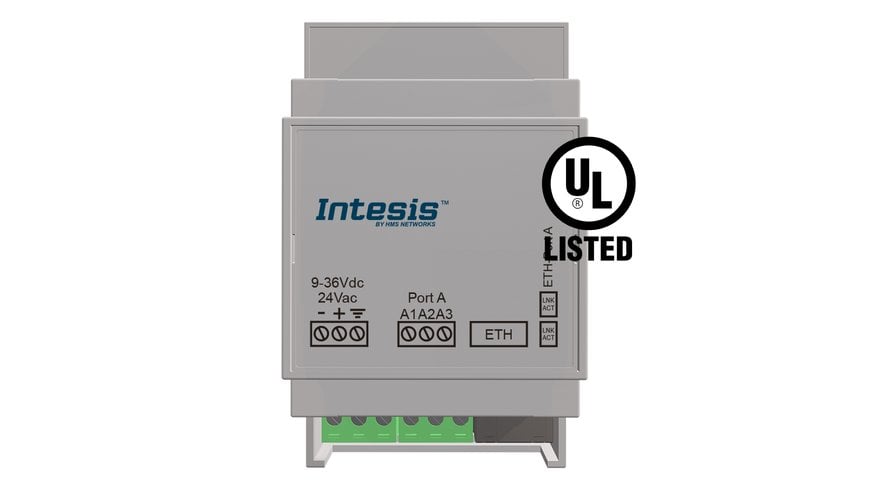www.industry-asia-pacific.com
02
'20
Written on Modified on
New Intesis gateway for integration of Electric Vehicle Chargers into Modbus-based BMSs
HMS Networks announces a new Intesis protocol translator that enables monitoring and control of OCPP 1.6-based Electric Vehicle Chargers from any Modbus based BMS.

A growing need for charging Electric Vehicles in buildings
The Electric Vehicle (EV) industry has been growing exponentially during the last years and it is here to stay. According to the International Energy Agency, there were about 7.3 million chargers installed worldwide in 2019. The chargers are available in all sorts of facilities: private parking lots, public buildings, shopping malls, public transportation, etc. Installing chargers in buildings helps to promote the EV industry and speeds up the move towards renewable energy. However, it also represents a challenge for the facilities where the chargers are installed. Energy management and the availability of these EV parking lots require a lot of communication between Building Management Systems and the charging stations.
Intesis protocol translation between OCPP and Modbus RTU/TCP enables monitoring and control of EV charging points
One of the most used protocols in the EV industry is OCPP, a standard that provides monitoring and control of the EV Charging point operations such as starting or stopping the charge, managing users or reading out energy parameters. While used by many EV charging point manufacturers, it is not a protocol frequently used in BMS or Building Automation controllers.
The new and innovative Intesis protocol translator from HMS Networks provides a standard solution that connects the EV and BMS markets. It allows BMS system integrators and EV charging point manufacturers to provide basic monitoring and control of OCPP 1.6-compatible EV charging points from any Modbus-based automation system in an easy, cost-efficient, and reliable way. The gateway enables the Modbus BMS to manage EV users, charging operations, and every measurement provided by the EV Charger, so the BMS can provide control, maintenance services, and energy reporting to the building owner. The gateway is available in two versions: one for 1 charger and 7 connectors, and one for or up to 20 chargers and 7 connectors each.
Easy and standard integration in any BMS thanks to Intesis MAPS
The gateway is configured using Intesis MAPS free configuration tool for all Intesis protocol translators. Intesis MAPS is designed to easily discover the OCPP chargers in the network and integrate them in the Building Automation system, using a standard register map that simplifies the integration into any Modbus TCP or RTU BMS.
The combination of Intesis MAPS and the Intesis OCPP to Modbus TCP/RTU protocol translator makes integration of electric vehicles to Building Management Systems easy, helping building owners to optimize the use of the EV technology in their facilities and get ready for the EV revolution.
Learn more at www.intesis.com
The Electric Vehicle (EV) industry has been growing exponentially during the last years and it is here to stay. According to the International Energy Agency, there were about 7.3 million chargers installed worldwide in 2019. The chargers are available in all sorts of facilities: private parking lots, public buildings, shopping malls, public transportation, etc. Installing chargers in buildings helps to promote the EV industry and speeds up the move towards renewable energy. However, it also represents a challenge for the facilities where the chargers are installed. Energy management and the availability of these EV parking lots require a lot of communication between Building Management Systems and the charging stations.
Intesis protocol translation between OCPP and Modbus RTU/TCP enables monitoring and control of EV charging points
One of the most used protocols in the EV industry is OCPP, a standard that provides monitoring and control of the EV Charging point operations such as starting or stopping the charge, managing users or reading out energy parameters. While used by many EV charging point manufacturers, it is not a protocol frequently used in BMS or Building Automation controllers.
The new and innovative Intesis protocol translator from HMS Networks provides a standard solution that connects the EV and BMS markets. It allows BMS system integrators and EV charging point manufacturers to provide basic monitoring and control of OCPP 1.6-compatible EV charging points from any Modbus-based automation system in an easy, cost-efficient, and reliable way. The gateway enables the Modbus BMS to manage EV users, charging operations, and every measurement provided by the EV Charger, so the BMS can provide control, maintenance services, and energy reporting to the building owner. The gateway is available in two versions: one for 1 charger and 7 connectors, and one for or up to 20 chargers and 7 connectors each.
Easy and standard integration in any BMS thanks to Intesis MAPS
The gateway is configured using Intesis MAPS free configuration tool for all Intesis protocol translators. Intesis MAPS is designed to easily discover the OCPP chargers in the network and integrate them in the Building Automation system, using a standard register map that simplifies the integration into any Modbus TCP or RTU BMS.
The combination of Intesis MAPS and the Intesis OCPP to Modbus TCP/RTU protocol translator makes integration of electric vehicles to Building Management Systems easy, helping building owners to optimize the use of the EV technology in their facilities and get ready for the EV revolution.
Learn more at www.intesis.com

